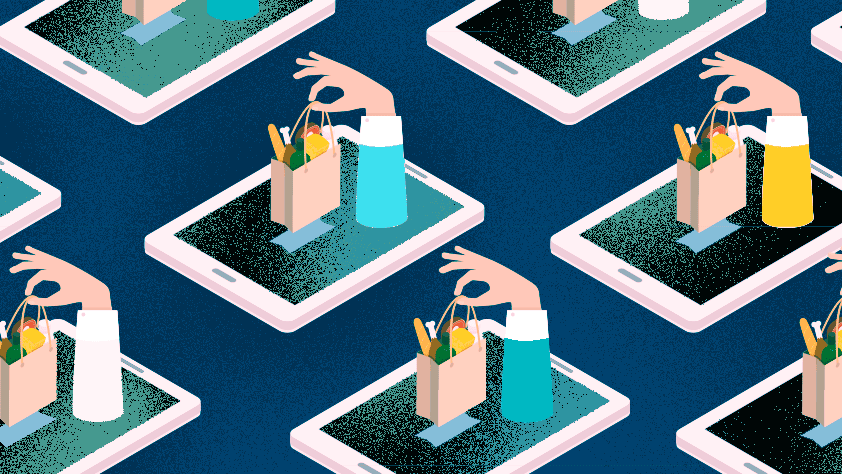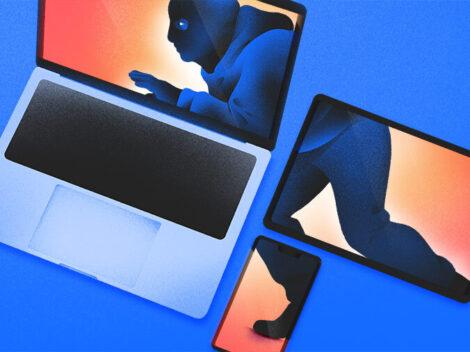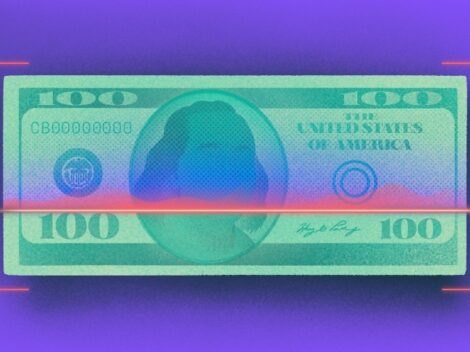Cashierless checkout won’t merely restructure retail business models: It will disrupt the entire payments industry.
Subscribe to the Crunchbase Daily
A few years ago, Amazon made headlines with its Amazon Go stores where shoppers simply retrieve items from shelves and walk out. This process has often been dubbed “cashierless checkout” but would be more accurately described as “checkout-free shopping,” as the checkout process is entirely eliminated.
While most industry analysts predict checkout-free shopping to impact automation, resource allocation, and store structuring, they’re missing the biggest target: payments.
On the horizon
Purchasing goods without having to check out saves customers time and annoyance while allowing retailers to upgrade their operations.
Amazon employs a combination of hardware and vision-based software in its Amazon Go stores. Each item sits atop a weight sensor. When a shopper lifts the item, they trigger the sensor, which assigns the item to that shopper by video. This solution is functional, but prohibitively capital intensive for small retailers.
Other solutions include QR codes, smart shopping carts and RFID tags. Machine vision, however, is most likely to succeed: It’s entirely software-based and leverages cameras, which most retailers already have for security, thereby minimizing any additional investment overhead.
Industry experts tell me current machine-learning algorithms can already assign goods to shoppers as accurately as the average cashier. Objectively, they’re both functional and economically viable, with startups like Inokyo leading the industry.
In every one of these new technological solutions, an app on the customer’s phone connects them to the store when the shopper arrives, automatically taking care of payment in the background.
For merchants of all sizes, checkout-free shopping provides a host of benefits:
- An improved customer experience and faster shopping process means more sales volume will flow through the store: Simply removing checkout lines is worth $37.7 billion.
- With no need for traditional cashiers, merchants can reallocate those personnel and financial resources elsewhere for greater profit.
- Eliminating checkout lines and checkout hardware will permit retailers to use their space more efficiently and display more products.
- As cashierless checkout solutions track movement at the item level, retailers can gain robust analytics on item movements, handling and purchasing behavior.
- When grabbing an item and walking out is a form of purchase, traditional shoplifting becomes a thing of the past.
Amazon, Albertsons and Sam’s Club are all trialing checkout-free technology across multiple stores. These retail giants can afford their own proprietary solution but most retailers can’t, so expect a white-label solution such as Grabango, Standard Cognition, or TrigoVision to target smaller retailers.
While the promise of convenience and streamlined operations fuels funding for checkout-free technology, replacing existing payment solutions is an even bigger opportunity.
Attacking payments
Today, credit cards are the most popular payment method for retail in the U.S. Payment processors (the companies that create the terminals you use at checkout) like First Data, Revel Systems and Toast charge about 2.3 percent to 2.8 percent and a flat fee (around 10 cents) from the merchant for every credit card transaction. Especially on low ticket items, this cost can severely cut into the retailer’s margins, one reason many small retailers set a minimum purchase size for paying by card.
Fees are structured this way because card networks like Visa and Mastercard take 1.5 percent to 2.5 percent and a flat fee from every transaction. These “interchange fees” are the largest cost component of processing credit and debit cards, with Visa, Mastercard, American Express and Discover controlling the vast majority of the market.
When checkout-free shopping provides brick-and-mortar retailers with a more direct relationship with their customers, they can easily add payments to that relationship, cutting out payment processors and reaping the rewards. New payment methods are intuitively available if consumers never have to pull out their wallet. Direct ACH transfer, for instance, is far closer to feeless, costing less than 1 cent per transaction. Merchants could share this retrieved economic surplus with their customers in the form of lower prices and loyalty programs.
For those customers who would prefer the sort of perks typically offered via credit cards (reward points, cash back, etc.), new direct-to-customer offerings from the merchant will fill the space: When retailers recapture 2.5 percent plus 10 cents per transaction, they have a significant amount of wiggle room to play with.


Diagrams by Charles Yu
Coming sooner than you think
The payments landscape can shift incredibly fast. For example, in less than five years China went from a market where transactions were made exclusively via credit/debit cards and cash to payment being primarily made via mobile wallets such as Alipay and WeChat. When I traveled to China last year, more than half of the stores in major cities wouldn’t even accept cards.

Source: Walk The Chat, “China’s mobile payment market share: mobile vs. non mobile.”
Today WeChat Pay and AliPay account for 93 percent of China’s mobile payments. To clarify the sheer magnitude of this growth: According to Glenbrook Partners, in 2019 at only five years old, WeChat Pay processed 365 billion transactions, more than double the entire Visa network (at 138.9 billion). Similarly in the U.S., apps like Venmo have already normalized feeless transfers between end users and are now enabling consumers to pay merchants directly via their mobile wallet.
The American brick-and-mortar retail market is worth more than $5.5 trillion. If cashierless checkout companies capture 5 percent of that over the next four years (a conservative estimate given how fast we have seen digital wallet adoption in other countries), they will have access to a $275 billion market. Expect checkout-free shopping to create a huge land grab, prompting a massive shift in the payments landscape.
Looking forward
Credit cards have long dominated U.S. payments. In the last decade, China, Japan and Southeast Asia have all updated their payment modes, leaving Western countries trailing in the payments landscape. When checkout-free shopping provides American retailers a more affordable option to process customer payments, cutting out the middleman is only a step away. As users adopt these new payment methods, will the card networks even survive?
Written by Charles Yu, a principal at Bling Capital, and the founder of his own angel fund. Formerly an LP at TI Platform Management, Yu’s portfolio includes investments in consumer companies including Spotify, Lyft, Airbnb, Zocdoc, Pinterest and Flipkart.

Stay up to date with recent funding rounds, acquisitions, and more with the Crunchbase Daily.


![Illustration of stopwatch - AI [Dom Guzman]](https://news.crunchbase.com/wp-content/uploads/Halftime-AI-1-470x352.jpg)







![Illustration of stopwatch - AI [Dom Guzman]](https://news.crunchbase.com/wp-content/uploads/Halftime-AI-1-300x168.jpg)
67.1K Followers